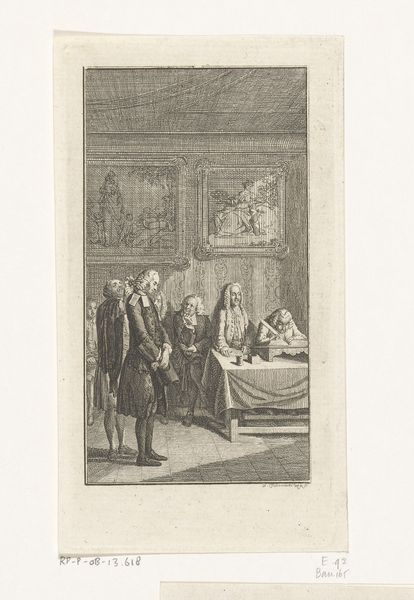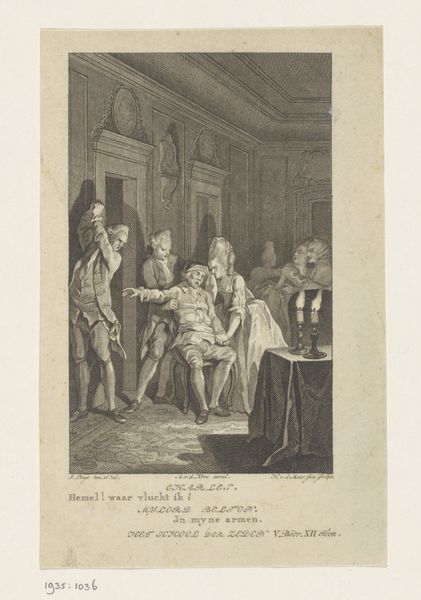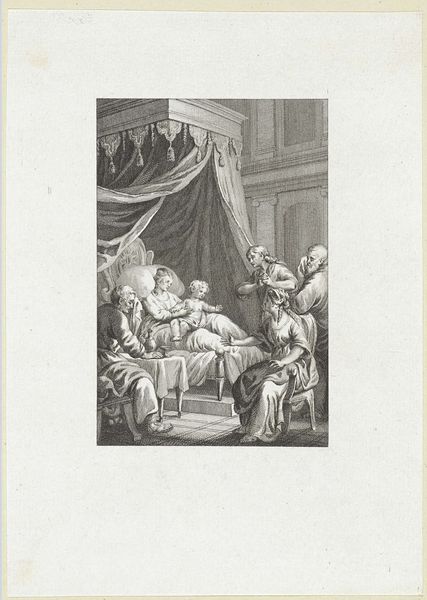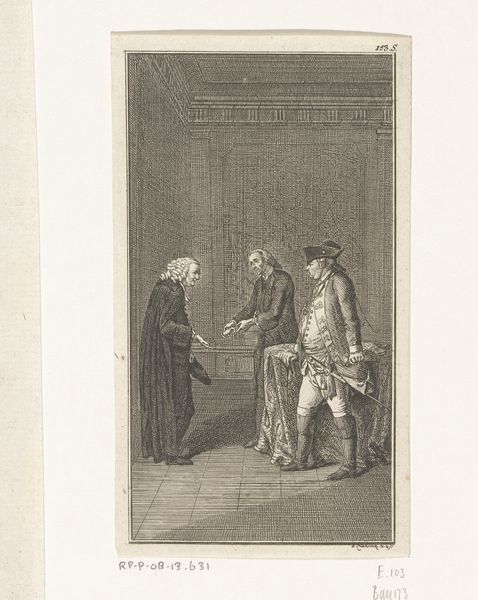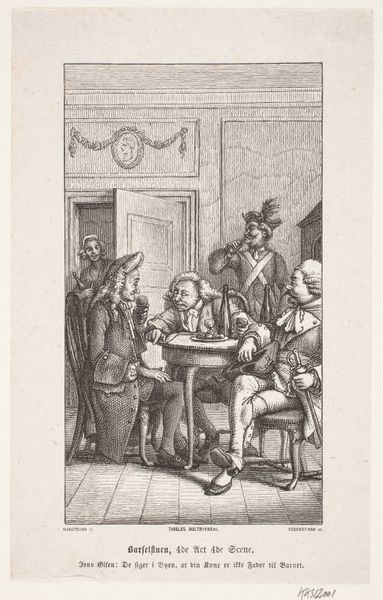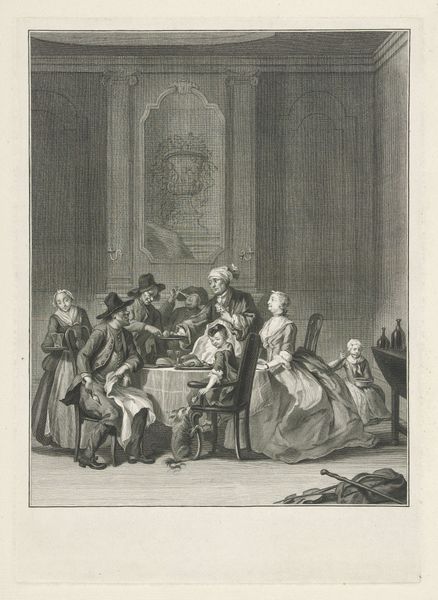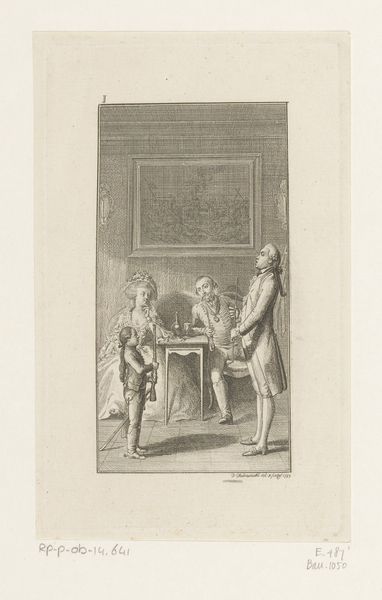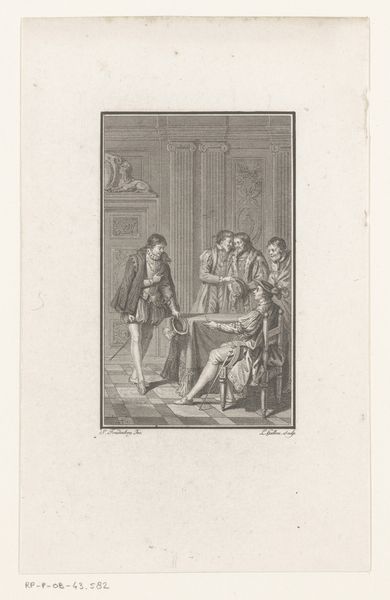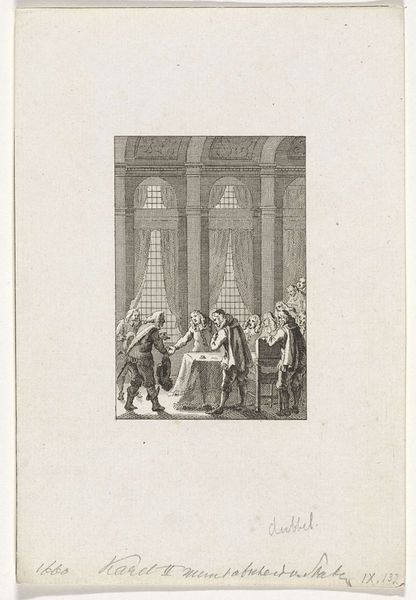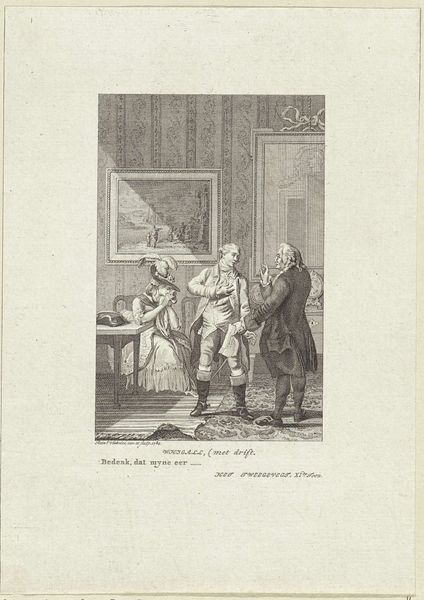
Dimensions: height 146 mm, width 96 mm
Copyright: Rijks Museum: Open Domain
Editor: So this is "Sebaldus Nothanker afgezet" by Daniel Chodowiecki, made in 1773. It’s an engraving. It feels like we're witnessing a really tense historical moment… everyone seems very stiff and formal. What symbols stand out to you in this print? Curator: The overturned chair! See how it disrupts the order of the scene? Chairs, thrones, stools, any seat, carry potent symbolic weight throughout art history, often linked to authority, stability, and power. Its being upended hints at disruption, a crumbling of the established order… the very 'afgezet' or deposition suggested by the title. Editor: That’s a great catch! The fallen chair really does change things. Is there a reading of this scene beyond a simple historic genre? Curator: Indeed. Consider also the two pictures on the wall. Though small, within the image itself, they may refer to judgement. How do you interpret the central figure's stiff posture and clasped hands? What feelings does this evoke in you? Editor: He seems resigned. I guess I initially focused on the communal aspect, but seeing him isolated… He is carrying the weight of judgment. Curator: Precisely! And the act of writing—the quill scratching against paper—symbolizes the inscription of his fate, its permanence. The written word solidifying events through memorializing and record. Even that small detail reverberates through time. Editor: I didn’t even notice the images on the wall initially, or give a second thought to the overturned chair; now it all feels interconnected. This piece seems to invite such a close, narrative reading. Curator: Visual symbols often offer entry points into complex historical narratives.
Comments
No comments
Be the first to comment and join the conversation on the ultimate creative platform.
